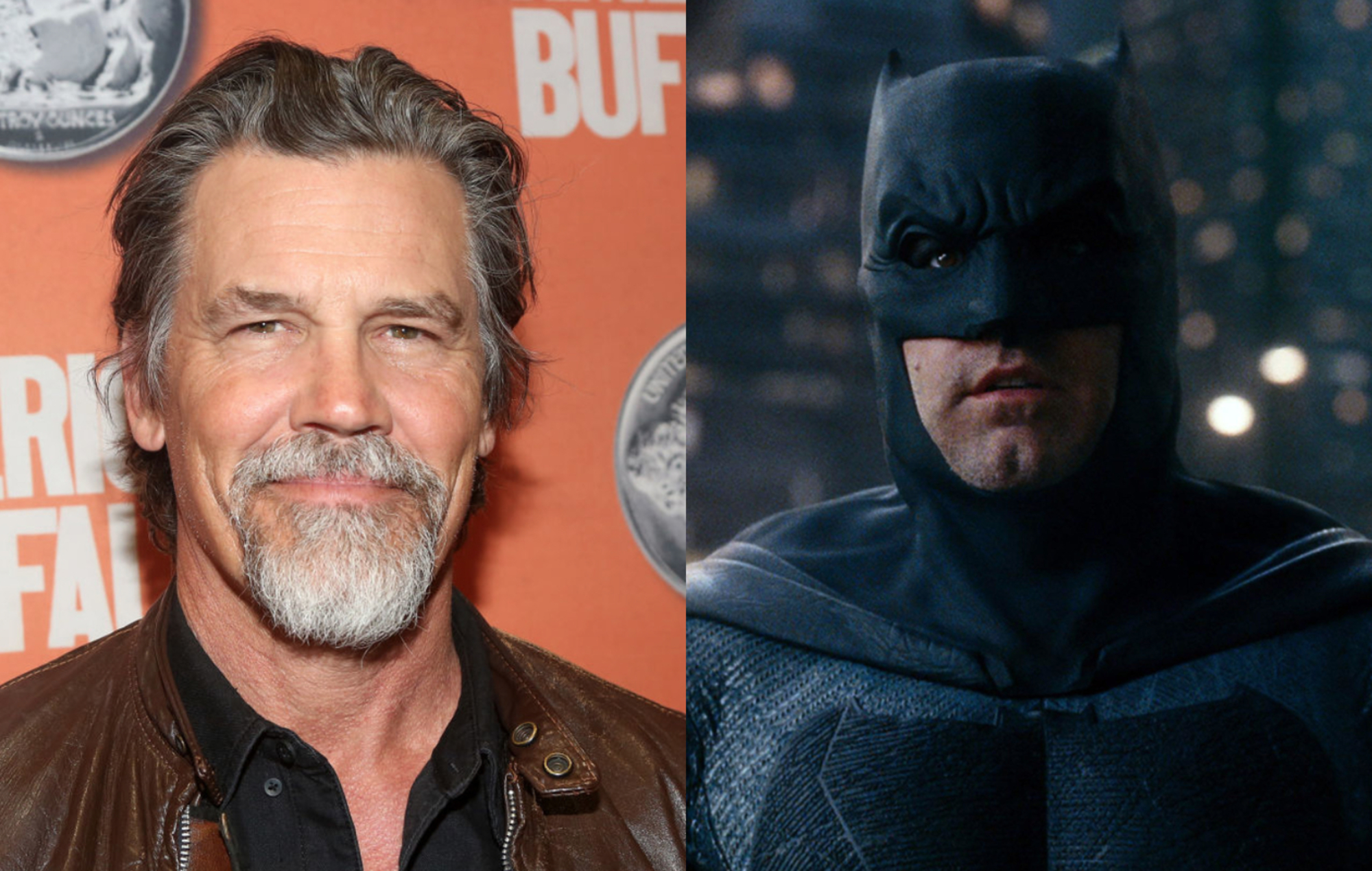
Combining a collage of gaming, anime, fan culture, internet identity, and weighty existential quandaries, a solo exhibition by the Chinese multimedia artist Lu Yang is to stay open at the Zabludowicz Collection for another month amid what the gallery describes as “phenomenal” demand.
- READ MORE: The best PS5 games to play in 2023
Featuring its own retro-styled gaming arcade – partly inspired by Soho’s iconic Las Vegas arcade, as well as the gaming destinations of LuYang’s home city Shanghai – the heart of NetiNeti revolves around six distinct DOKU avatars. Each one is an extension of the artist. As well as featuring in various film pieces around the show, where they blankly dance to plasticky heavy metal and twisting ambient scores, these figures also appear as playable characters in a series of games that journey deep into surreal, imaginative worlds, exploring questions of life, death, and mortality. Midway through Material World Night (2018) – a playable, nine-level video game set in a future ruled by AI robots, clones, and cyborgs with tough exoskeletons – I’m stopped by a strange, lumbering figure in the middle of a twinkling, chequered forest. “If we knew when we were going to die, then we might spend our lives in fear,” the being tells my roaming knight. “The infiniteness of death gives us the illusion that we will live forever”.

Across the room, a cheerful-looking retro kiosk – not that dissimilar to a shoot’ em up arcade game like Space Invaders – tasks visitors with transforming malignant cancer cells into cute-looking anthropomorphic splodges. “Super super fast!” the rainbow-coloured cartoons sing in sinister unison. “You will never notice that!” Nearby, a pair of The Fast and the Furious arcade superbikes have been transformed into pelvic chariots. Riding as the gender-subverting superhero Uterus Man, players take out pairs of chromosomes, and zoom down a spacey racetrack. Besides being playful and compulsive, the games explore all manner of philosophical questions, and are interested in skewing usual views of life and death.
“It’s definitely meant to be a playful, communal, fun experience,” explains Paul Luckraft, senior curator at the Zabludowicz Collection. “We’ve had lots of visitors here that wouldn’t necessarily know they’re coming to see an art show. It’s more about coming for the experience, or coming to play a game, or a Dance Revolution arcade machine.”
“LuYang’s always trying to get that extra level of interaction,” adds curator Julia Greenway.

While art history is typically peppered with singular, genius-like figures who centre themselves in each masterpiece they create, LuYang prefers to avoid getting into specifics when it comes to matters of their own biography. Instead, Greenway explains, they’re more interested in the overlaps between “their digital identity and their in-person identity.” In a similar way to how players adopt conflicting characters and avatars when they’re playing a game – say, the opposing viewpoints of The Last of Us’ Ellie and Abbie, or the ever-shifting goals and motivations of a protagonist in Assassin’s Creed – the six distinct avatars LuYang allow for different perspectives and possibilities to unfold.
“I view the relationship between [the] DOKU [avatars] and myself as being akin to that between a soul and its mortal shell, similar to something who is dying, standing in a strange yet familiar way besides their dead body and looking at it,” LuYang previously said in a companion interview for their Berlin exhibition DOKU Experience Center. “When I realised that DOKU is a shell, I used this shell to express my thoughts. And I am able to drive the shell with motion data captured from other places.” Each avatar is created by capturing LuYang’s own likeness and movements – and in a similar way to an AI pop star, or virtual icon, becomes a kind of extension of the physical body. “The face of all the avatars for the DOKU series is LuYang’s own face,” Luckraft says. “It’s their image, scanned, and mapped, and then combined with data captured from other human bodies, and motion capture from dancers.”
This particular aspect of the exhibition was partly moulded by a flight LuYang took amid the outbreak of the pandemic. As a thunderstorm quickly enveloped the plane, lighting the city below with quick flashes of white light, the artist experienced what they now describe as an “ecstasy” in the midst of what felt like a near-death experience.

“The main driver of their practice has been this idea of escaping or trying to find an alternative life for themselves in different habitats, different avatars, and different versions of themselves can exist in a digital space, across different times,” Luckraft says. “The main concept of the show, Neti Neti, is a Sanskrit phrase meaning neither this nor that. It’s this idea of trying to suggest that perhaps, rather than thinking in binary opposites, LuYang is more interested in finding a middle pathway, and sort of not being trapped in binary thinking. That’s their main conceptual framework, and it manifests itself in all sorts of different ways across the show. It also aligns with their very sincere interest and exploration of Buddhism, and Buddhist teaching. Their work is a way to process, deal with and understand… they’re getting to grips with what you can take from those teachings.”
Bringing these complex ideas to life in the unusual surroundings of the Zabludowicz Collection – a former Methodist Church – has been a challenge, but the sacred surroundings strangely end up feeling like the perfect fit. In place of the religious figures that might usually adorn a stained glass window, the focal point of the Collection’s main space, right above its deserted altar, is a digital screen bearing the images of LuYang’s six DOKU avatars.
For Greenway, the process of tracking down a pair of original arcade motorbikes and modifying them into LuYang’s game Uterus Man – based on their brilliantly bizarre 2013 video piece about a superhero equipped with an umbilical whip and “baby beast mode” – “is probably the best thing that’s ever happened in my career,” she laughs. “It’s like a perfect union… before it has always been a joystick game, and adapting it to that console was really amazing”.

Luckraft, meanwhile, highlights The Great Adventure of Material World as a favourite piece which also offers infinite other possibilities. “You can imagine that being developed into a much more full world,” he says. “It encompasses so many different levels, and you meet the previous characters LuYang has made; you encounter Uterus Man, and the scenes from [2016’s] Delusional Crime and Punishment, you encounter the cutesy world of the DOKU representing Heaven. All these things can ripple out. The whole quest is asking you to dispense of material thinking, and by the end point you end up floating up into space, with all this debris and material floating by. There’s a desire to escape our reality somehow, and perhaps then a different reality can be achieved.”
Behind us, a group of visitors are clumsily battling through a game of LuYang’s Dance Revolution, laughing their heads off as garish music blares tinnily out of the adapted arcade console. Neti Neti certainly raises some hefty questions about mortality, but it also rejects binary ideas and set ways of thinking in playful, often absurd fashion. You have to admit, musing about the meaning of life is rarely this much fun.
LuYang: Neti Neti is at the Zabludowicz Collection until March 23 2023
The post Lu Yang: NetiNeti – the gaming-inspired art show asking the big questions appeared first on NME.







